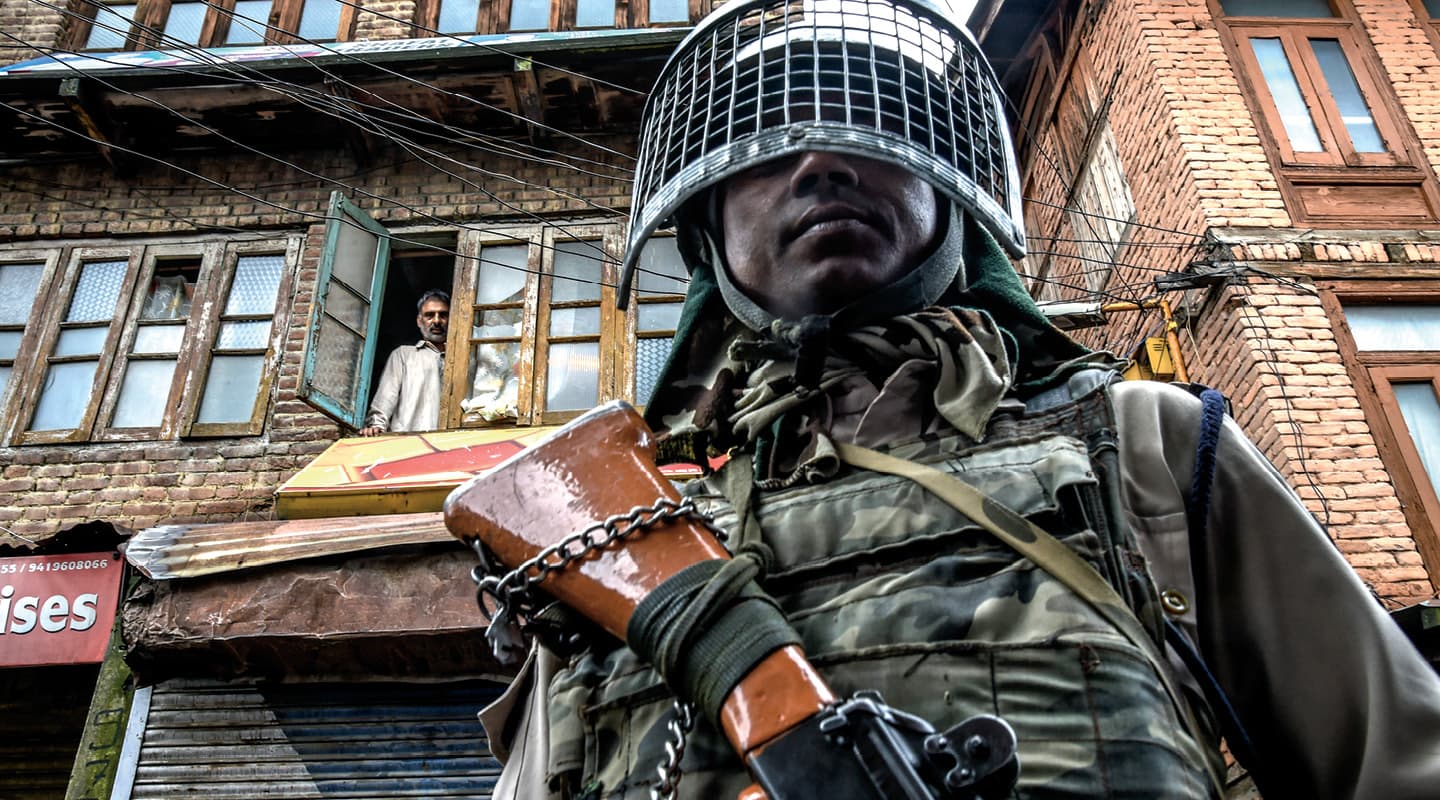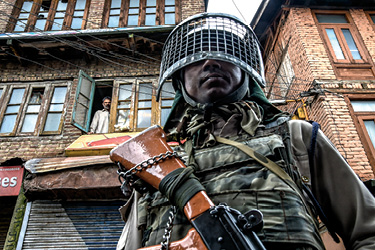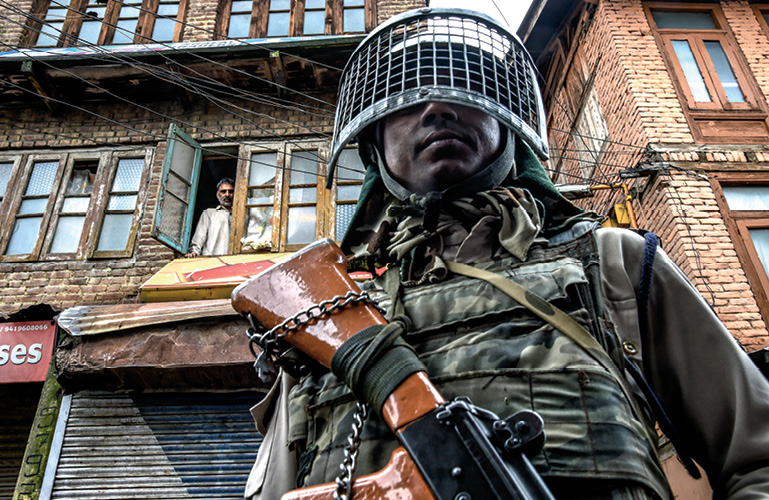Kashmir is a Muslim-majority territory that sits high in the Himalayan mountains on the dividing line between India and Pakistan. For 72 years—ever since those two nations became independent—it has been a source of conflict between them.
India and Pakistan both claim Kashmir, with a population of about 12.5 million people, and both control parts of it. The two nuclear-armed nations have even fought two wars over the dispute. Former president Bill Clinton once called Kashmir “the most dangerous place in the world.” Still, for decades an uneasy stalemate has prevailed, broken by occasional military incursions, terrorist attacks, and police clampdowns.
But that fragile situation shattered in August, when India sent troops into the portion of Kashmir that it controls. As part of the crackdown, the Indian government shut down internet and phone service, leaving millions of Kashmiris almost completely cut off from the outside world.
In Srinagar, the region’s largest city, soldiers hunkered down behind checkpoints. People glanced furtively out their windows, afraid to step outside their homes. Protests erupted and repeatedly descended into violence. The crackdown has raised tensions between India and Pakistan and shocked the international community.
“You have two nuclear powers who’ve fought four wars, and two of them have been over Kashmir,” says Anubhav Gupta, an India expert at the Asia Society in New York. “People are concerned that if there’s any sort of military confrontation again, that’s very dangerous.”
Kashmir is a Muslim-majority territory that sits high in the Himalayan mountains. It lies on the dividing line between India and Pakistan. Those two nations became independent 72 years ago. The territory has been a source of conflict between them ever since.
Kashmir has a population of about 12.5 million people. India and Pakistan both claim the territory and control parts of it. The two nuclear-armed nations have even fought two wars over the dispute. Former president Bill Clinton once called Kashmir “the most dangerous place in the world.” Still, for decades an uneasy stalemate has existed. It’s been broken only by occasional military invasions, terrorist attacks, and police clampdowns.
But that fragile situation shattered in August. That month, India sent troops into the part of Kashmir that it controls. As part of the crackdown, the Indian government shut down internet and phone service. That left millions of Kashmiris almost completely cut off from the outside world.
In Srinagar, the region’s largest city, soldiers crouched behind checkpoints. People peaked out their windows, afraid to step outside their homes. Protests erupted and repeatedly became violent. The crackdown has raised tensions between India and Pakistan. All of the turmoil has shocked the international community.
“You have two nuclear powers who’ve fought four wars, and two of them have been over Kashmir,” says Anubhav Gupta, an India expert at the Asia Society in New York. “People are concerned that if there’s any sort of military confrontation again, that’s very dangerous.”



